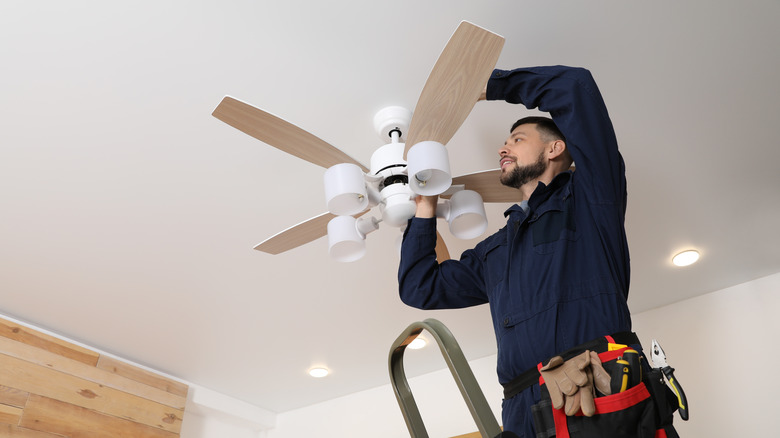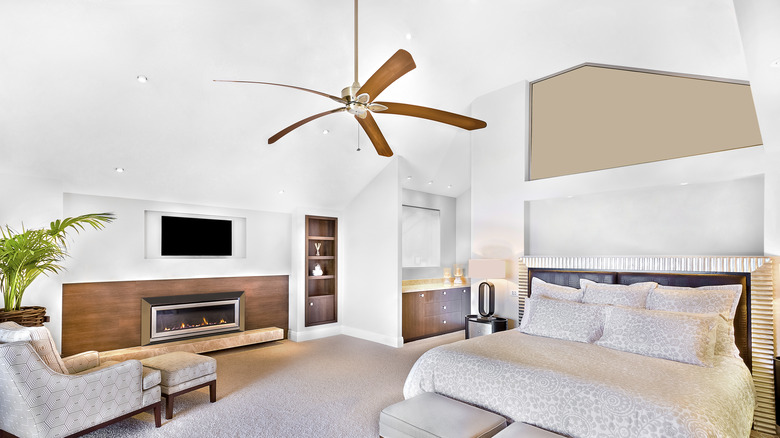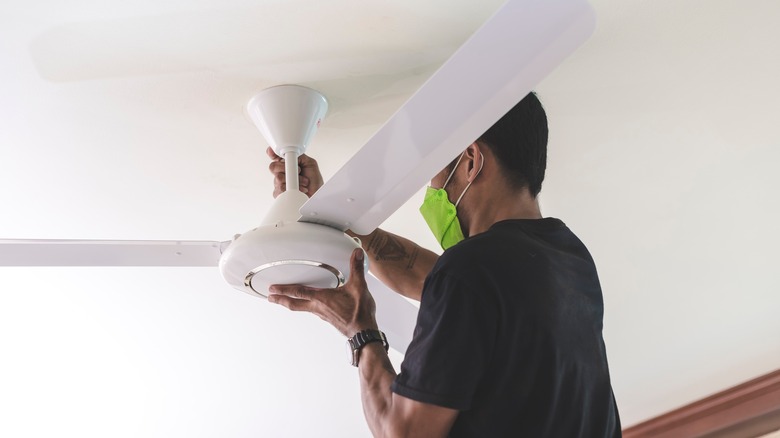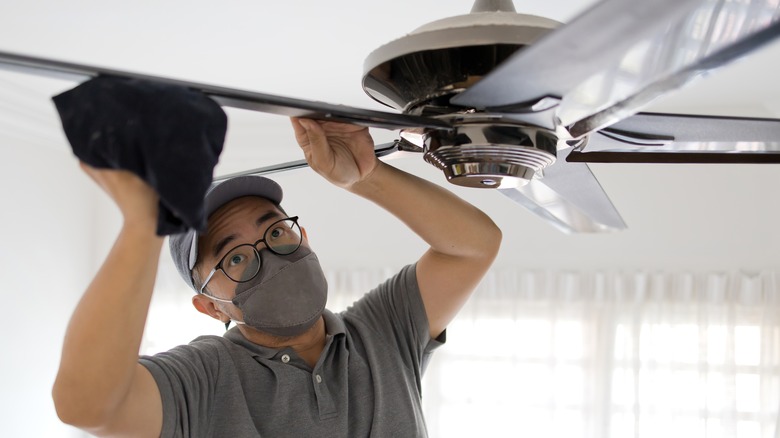3 Mistakes People Make When Adding A Ceiling Fan To A Room
When it comes to home improvement, certain projects look easier than they actually are. Such is the case with ceiling fan installation, an undertaking that, if handled poorly, can pose some serious safety hazards. But that's not all there is to it. While people have become more particular about the design aspect of a ceiling fan (rather than just having something basic to do the job of cooling a room), they still make a lot of blunders when it comes to choosing the right fan in terms of its performance aspect, according to ThreeSixty Ceiling Fans.
Many homeowners install ceiling fans purely because of aesthetic reasons. They find one they like and immediately jump to finding the perfect spot for it, thinking that looking pretty is all that's going to matter in the long run. But, as you will read below, location, size, and maintenance are all things to look out for. Here's our mini-guide to mistakes you can avoid when installing a ceiling fan in your home.
Installing a ceiling fan too close to furniture
One of the key advantages a ceiling fan has over an air conditioner is its ability to create a much gentler air flow, especially when placed in a room with a high ceiling. The air dances all around the room, creating a softer chill when compared to the sharper sensation you would get when sitting under an air conditioner.
However, what not many people realize is that installing a ceiling fan too close to pieces of furniture can cause a handful of risks. For one, cat owners should look out for their pet that may jump and catch the pull chain of traditional models, a concern of some cat owners in CatForum. But more universally, placing a ceiling fan in close proximity to furniture can influence the turbulence of the airflow. This means that certain furniture may be blocking the air from moving in a more pleasant pattern. So, in case you don't like the airflow in your room, consider moving the furniture around.
Selecting the wrong fan size
Essential not only in terms of performance (air delivery) but also in terms of how apt it looks when placed in a room, a ceiling fan needs to be the right size, according to DelMar Fans & Lighting. Typically, a fan would be measured by its sweep size (also known as blade span). It is the diameter of the circle formed when the fan is on and working. Your room, therefore, should include a fan with the right sweep size. Carefully measuring your room dimensions before buying a fan is highly recommended.
Another thing people tend to look at when it comes to ceiling fans is the CFM, which is the cubic feet per minute the fan moves — because the more the fan moves, the cooler things will be. DelMar Fans & Lighting breaks down the preferred CFM for different rooms of the house, including the garage, basement, and even the bathroom.
Neglecting maintenance
Once a ceiling fan is installed, many consider it done with and simply forget to maintain it over the years. And understandably so, as maintenance can seem like a tedious task. However, an unmaintained ceiling fan is going to bring you way more headaches in the long run. Dust collects on the blades over time, and when it goes inside the motor, it can lead to various malfunctions, repairs, and even potential replacements. To avoid all those, simply remind yourself to clean it from time to time; Today says that a weekly dusting will make a big difference.
Berkeys suggests that other maintenance is only needed when you see or hear something wrong with the unit. To learn the correct way of maintaining your particular ceiling fan model, read carefully through its owner's manual. There may be other things your model specifically needs, like the addition of oil from time to time.



